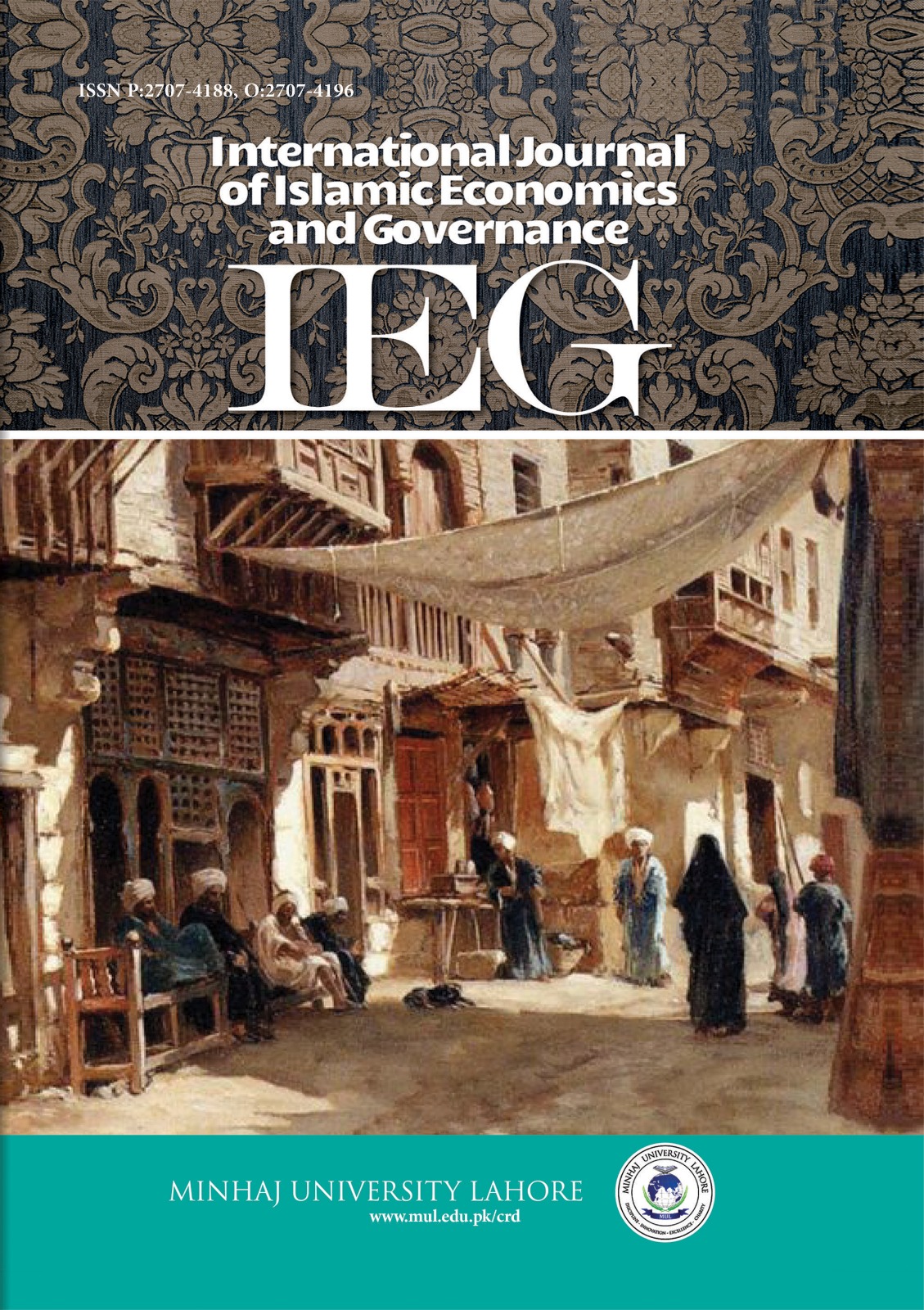Behavior Model of the Producer who Believes in Life After Death: A Mathematical and Geometric Approach
DOI:
https://doi.org/10.58932/MULD0042Keywords:
producer, life after death, Islamic economy, Behavior, ProductionAbstract
Producer behavior is one of the important theoretical challenges in the field of religion effect on the economy. In this field, theories have been presented. But these theories also have shortcomings. Belief in the afterlife effects on producer's behavior, this article attempts to analyze and to explain the effect of belief in life after death and satisfaction in that life on the producer's behavior by recalling the producer's motivation and goal and giving it a framework compatible with religion. This article is in the framework of theorizing and its analysis method is the method of logic along with mathematical and geometrical analysis. Among the findings of this study is the explanation of the effect of religious beliefs on producer behavior, how to determine the balance, the optimal size of production on the producer's productive behavior with mathematical and geometrical methods. The main innovation of this paper is to present a theory on the behavior of the faithful producer. In addition, a special innovation of this paper is to present mathematical and geometric analyses in explaining the behavior of the faithful producer.
References
Abbas, A. R. B. M. (1995). Islamic economics: A psycho-ethical paradigm. Al-Ta’sil, 2, 116–123.
Akhtar, M. R. (1992). An Islamic framework for employer-employee relationships. The American Journal of Islamic Social Sciences, 9(2), 202–218.
Akhtar, M. R. (1993). Modelling the economic growth of an Islamic economy. The American Journal of Islamic Social Sciences, 10(4), 491–511.
Ali, M. Y. (1980). Optimal utilization of resources and maximization of production in Islam. In Thoughts on Islamic Economics (pp. 218–227). Islamic Economics Research Bureau.
Arief, M. (1982). Ethics and economics in Islam. Islamika, 2, 97–113.
Ariff, M. (1997). The role of the market in the Islamic paradigm. IIUM Journal of Economics and Management, 5(2), 97–107.
Bendjilali, B., & Taher, F. B. (1990). A zero efficiency loss monopolist: An Islamic perspective. The American Journal of Islamic Social Sciences, 7(1), 219–232.
Dar, M. I. (1988). Islamic economic system. Journal of Islamic Banking and Finance, 5(3), 37–51.
Ezzati, M. (2003). Explaining the effect of faith on consumer behavior. Islamic Economics Quarterly, 11, 11–34. (In Persian)
Ezzati, M. (2005). Faith, rationality and satisfaction. Economics Research Center. (In Persian)
Ezzati, M. (2010). Explanation of the theory of Muslim producer behavior. Islamic Economics Quarterly, 39, 35–62. (In Persian)
Faruqi, I. R. (1983). Tawhid: The principle of the economic order. Tawhid for Thought and Life, 1, 187–222.
Gusau, S. A. (1988). The nature and methodology of Islamic economics. In R. Islam Molla, A. R. Moten, S. A. Gusau, & A. A. Gwandu (Eds.), Frontiers and mechanics of Islamic economics. University of Sokoto.
Hallaq, S. (1995). Rationality in production: The case of the Muslim firm. Humanomics, 11(4), 29–38.
Hasan, Z. (1975). Theory of profit. Vikas Publishing House. (Out of print)
Hasan, Z. (1983). Theory of profit: The Islamic viewpoint. Journal of Research in Islamic Economics, 1(1), 1–16.
Hasan, Z. (1992). Profit-maximization: Secular versus Islamic. In S. Tahir, A. Ghazali, & S. O. S. Agil (Eds.), Readings in microeconomics: An Islamic perspective (pp. 141–225). Longman.
Hasan, Z. (2002). Maximization postulates and their efficacy for Islamic economics. American Journal of Islamic Social Sciences, 19(1), 95–118.
Hasan, Z. (2008). Theory of profit from Islamic perspective (MPRA Paper No. 8129). Munich Personal RePEc Archive.
Iqbal, M. (1992). Organization of production and theory of firm behavior from an Islamic perspective. In A. Ahmad & K. R. Awan (Eds.), Lectures on Islamic economics (pp. 205–215). Islamic Research and Training Institute, IDB.
Kahf, M. (1978). The theory of production. In The Islamic economy: Analytical study of the functioning of the Islamic economic system (pp. 29–38). The Muslim Students’ Association of the United States and Canada.
Metwally, M. M. (1992). A behavioral model of an Islamic firm. In S. Tahir, A. Ghazali, & S. O. S. Agil (Eds.), Readings in microeconomics: An Islamic perspective (pp. 125–131). Longman.
Metwally, M. M. (1997). Economic consequences of applying Islamic principles in Muslim societies. International Journal of Social Sciences, 24(7–9), 941–957.
Mirmoezi, S. H. (2012). Theory of producer behavior and labor demand in Islamic economy. Islamic Economy Quarterly, 13, 103–134. (In Persian)
Mohd. Amin, R., & Yusof, S. A. (2003). Allocative efficiency of profit maximization: An Islamic perspective. Review of Islamic Economics, 13, 5–22.
Mohd. Amin, R., & Yusof, S. A. (2007). A survey on the objective of the firm and models of producer behavior in the Islamic framework. J.KAU: Islamic Economics, 20(2), 3–16.
Naqvi, S. N. H. (1981). Economics of human rights: An Islamic perspective. Hamdard Islamicus, 4, 31–51.
Naqvi, S. N. H. (1997). The dimensions of an Islamic economic model. Islamic Economic Studies, 4(2), 1–24.
Al-Safar, A. K. (1998). Use of non-linear programming in achieving equilibrium of an Islamic firm. Humanomics, 14(2), 74–89.
Siddiqi, M. N. (1979). The economic enterprise in Islam (2nd ed.). Islamic Publications.
Siddiqi, M. N., & Others. (1992). Islamic producer behavior. In S. Tahir, A. Ghazali, & S. O. S. Agil (Eds.), Readings in microeconomics: An Islamic perspective (pp. 131–138). Longman.
Zaim, S. E. (1979). Islamic economics as a system based on human values. Journal of Islamic Banking and Finance, 6(2), 13–21.









